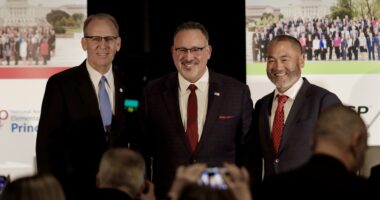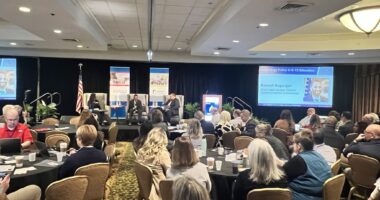Strengthening Afterschool Programs Through Collaboration
This month, a groundbreaking compendium—featuring the work of more than 100 thought leaders—has been released, highlighting the bold and persuasive evidence that engaging afterschool and summer learning yield positive outcomes for students and for community and family engagement in learning.
Edited by Terry K. Peterson, Ph.D, Expanding Minds and Opportunities: Leveraging the Power of Afterschool & Summer Learning for Student Success includes a co-authored article from NAESP Executive Director Gail Connelly and Paul Young, former Executive Director of the National Afterschool Association. The following version has been condensed and can be found in full in the newly available publication.
Collaboration for Student Success: The Benefits of Strong School, Principal, and Afterschool/Community Relationships
In 2009, the boards of directors of the National Association of Elementary School Principals (NAESP) and the National Afterschool Association (NAA) joined together to challenge our members to “build a new day for learning,” aimed at achieving innovative reform within schools and through quality afterschool and summer learning programs. What follows is a set of key insights, principles, and practices for partnership and collaboration that will reinforce the efforts of schools, afterschool, and summer learning programs to enhance learning and achievement.
Relationship building is the cornerstone to achieving positive school/afterschool outcomes for children and youth.
Across the nation there are scores of model programs featuring successful partnerships between principals and afterschool and summer learning program directors. These programs provide students with positive and safe environments, empower learning and academic success, and encourage an ongoing collaboration among peers, adults, and the greater community that puts the needs of the students first.
Scott Langham, principal of Bay Minette Elementary School in Baldwin County, Alabama, works collaboratively with Cherry Penn, president of the Alabama Community Education Association, who is also the After School Childcare Program supervisor and 21st Century Community Learning Centers grants program manager for Baldwin County. “The Project Tiger Paws has provided a quality afterschool program and plays a vital role in providing opportunities for our students to realize learning can be fun,” Langham said in an article for the Press-Register Community News last year. “The 21st Century Community Learning Centers program provides outstanding enrichment activities for the students at Bay Minette Elementary School, which encourages the students to think of themselves as capable learners.”
Shared vision, planning, and culture are essential to effective school/afterschool/summer learning efforts.
Increasingly, principals and afterschool leaders are being expected to do more with less. Some principals may think of afterschool as an additional task they must manage; more realistically, afterschool affords solutions to their many challenges in meeting the learning, social, and emotional needs of students. When principals and afterschool directors provide a common vision, encourage collaborative planning, and foster a professional culture of mutual support for effective program implementation across all institutional settings, they help every student have a better chance for success.
IS 318 middle school in Brooklyn, New York, makes afterschool part of the school culture, a key factor in their success as a school. Principal Fortunato Rubino, Assistant Principal John Galvin, and afterschool leaders work with teachers and community-based organizations to offer students academic help as well as up to 40 different enrichment activities, including ceramics, art, band, guitar, fitness, homework help, reading and math programs, photography, cheerleading, volleyball, basketball, yoga, academic contests, computer arts, theater/drama, chorus, orchestra, bicycling, cross-country, football, soccer, baseball, track, wrestling, softball, field hockey, martial arts, debate, yearbook, newspaper, student government, technology, and more (Jacobs, 2011).
Effective planning solidifies school/afterschool/summer learning collaboration.
Effective planning is essential for the success of school, afterschool, and summer learning initiatives. It must involve the principal and the afterschool and/or summer learning program site leaders and cannot be delegated to others. Each must know how and be able to connect and form a strong professional relationship and foster similar relationships among their respective professional staffs. Increasingly, for example, principals are instituting collaborative intervention-planning practices that involve their staffs and afterschool personnel in data analysis and the development of coordinated team approaches to helping students achieve.
School/community partnerships improve academics, attendance, and more for students at Holmes Junior High School in Cedar Falls, Iowa. Principal David Welter credits their afterschool program ECHOES (Every Child Has the Opportunity to Excel and Succeed), which offers a wide variety of programs and builds many positive adult-child relationships. According to Welter, the data that has been collected since their program was initiated in the 2002–03 school year show that collaboration between the Cedar Falls Community School District and the Cedar Falls community, along with innovative and engaging learning opportunities tied to academics and a caring and energetic staff, has produced positive results for their students. Tracking of students involved in the ECHOES program showed significant improvement in attendance, fewer behavioral referrals, and better grades (Welter, 2010).
Effective afterschool and summer learning programs expand learning opportunities.
Principals and afterschool leaders should meet briefly each week to coordinate their communications and plan the alignment of learning activities with the strong caution that afterschool and summer learning programs and activities not lead to a replication of what happens during regular school hours or the regular school year and thus simply become “more school” after school. Rather, both principals and afterschool leaders should want afterschool and summer learning to be the time and place in which young learners are free to explore, develop, and be enriched in a variety of differently structured activities and environments. Many successful programs are designed to offer activities, experiences, and relationships that promote students’ social and emotional development, often reducing the risk of delinquent behavior and further enhancing their academic performance and motivation to continue to learn. For some learners, the standard school day or school year does not allow adequate time to learn what is necessary for success in the modern workforce and world. High quality afterschool and summer learning programs provide more time and opportunity for those who need it most, taking into account and accommodating the different ways students learn.
Conclusion
Student learning is no longer the sole province of schools. Therefore, it is imperative that principals and afterschool program site leaders, along with their faculty and staff colleagues, strive to build strong ties of mutual support for enriching the experiences of children and youth in schools and afterschool and summer learning programs in every learning community throughout our nation. As the nation’s economy improves, we also welcome state and local efforts to develop policies and make financial investments that invite and encourage expanded learning opportunities after school and during the summertime through strong school-community partnerships.
by Gail Connelly, NAESP Executive Director, and Paul Young, former Executive Director of the National Afterschool Association.




